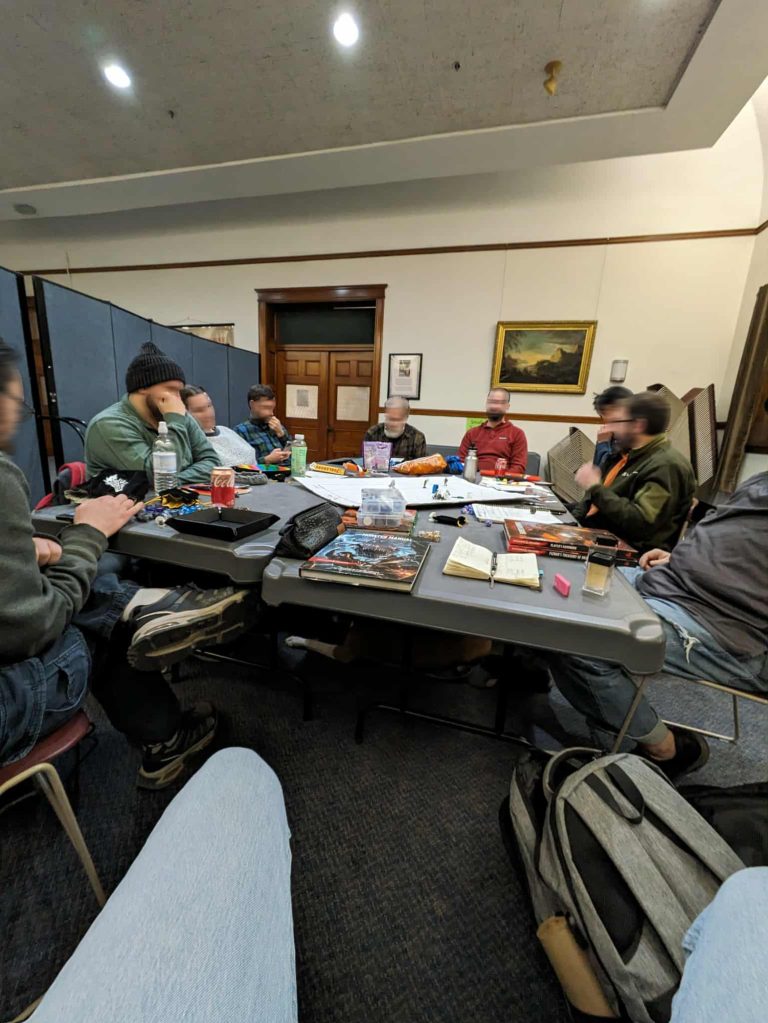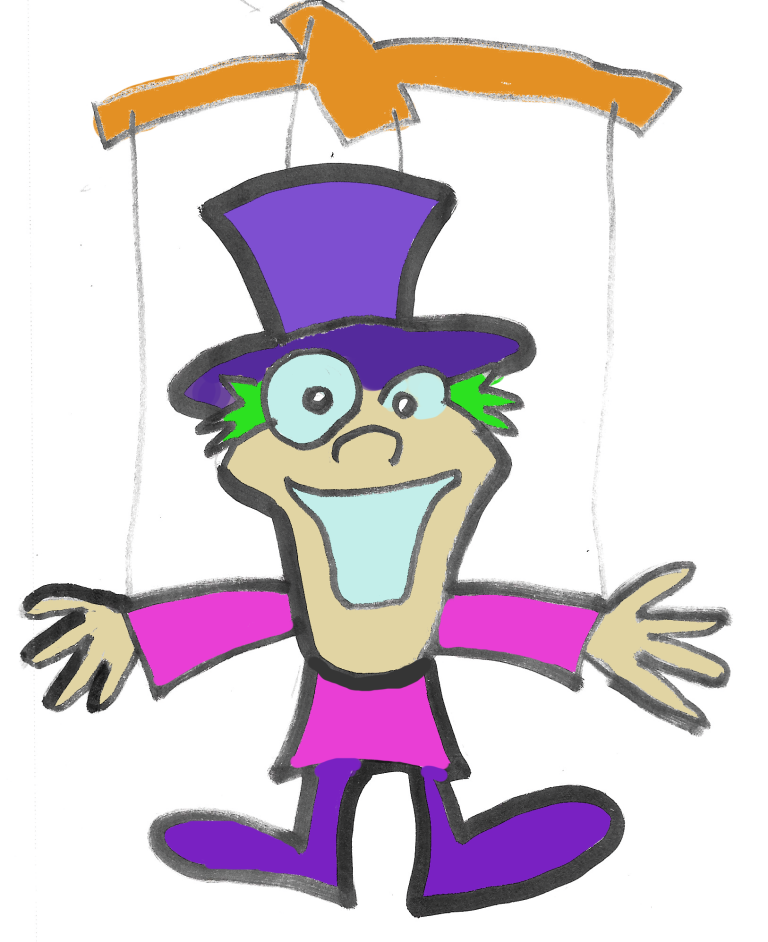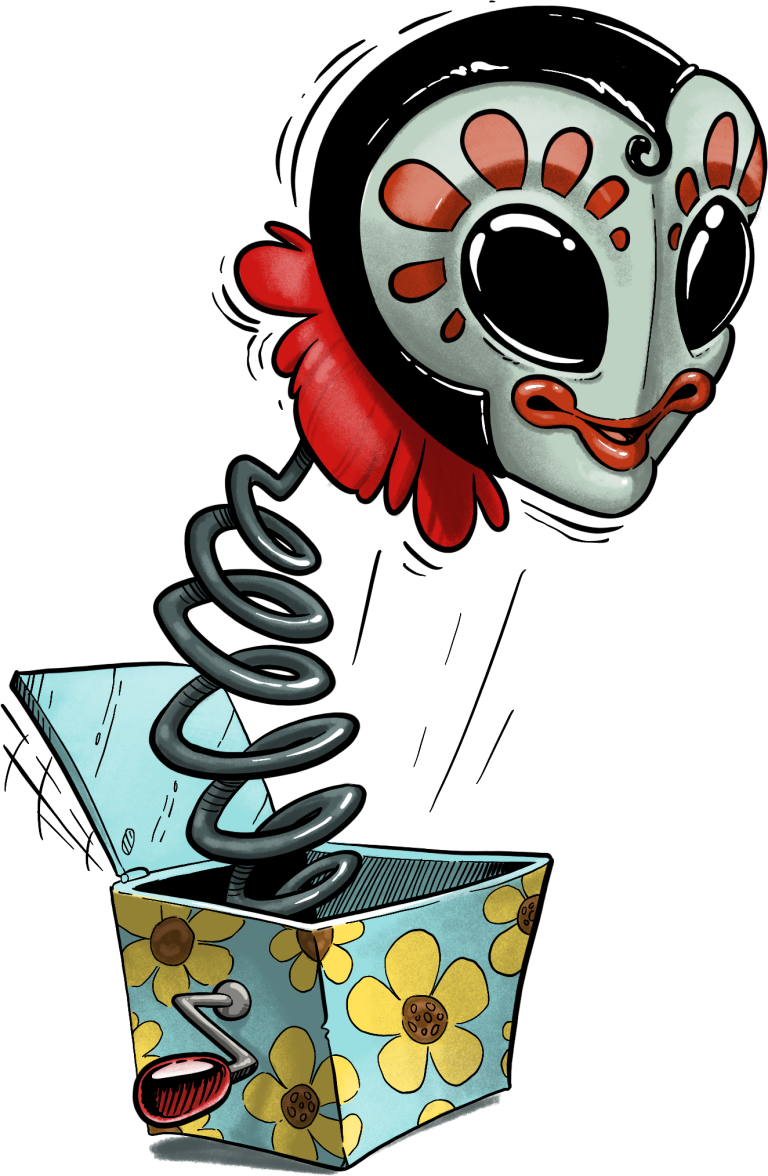NOTE: the opinions expressed in interviews are those of the guests, not necessarily those of shadomain.com.
Today we talk with Martin Thomas, AKA as Daddy Rolled a 1! You can find him on his YouTube channel here, or at his blog here. He’s got a new project Kickstarting next week (June 3, 2024) called Alchemy, Explosives and Inventions!. You can also find him at
- X: https://x.com/DaddyRolleda1
- Facebook: https://www.facebook.com/DaddyRolledA1
- Instagram: https://www.instagram.com/daddyrolleda1/
- Bluesky: https://bsky.app/profile/daddyrolleda1.bsky.social
Let’s hear from Martin!
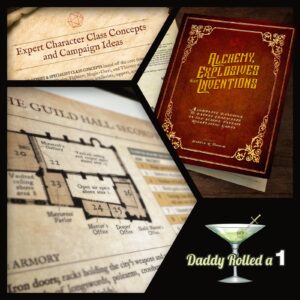
How did you get started in TTRPGs?
In the fall of 1981, I was at a brand new school with no friends yet, and a group of kids saw me reading some books on King Arthur folklore. They asked if I’d read any Tolkien (I had) and then asked if I’d be interested in a game where I could “be” Strider in the game. They introduced me to D&D using the 1981 Moldvay Basic rules, and my mom then gave me that boxed set for an Easter gift about six months later. I’ve been playing ever since.
What’s your favorite TTRPG?
The easy answer is “whichever one I’m playing at the time” but right now, I’ve really been inspired by going back to my roots with the 1981 Basic D&D Rules by Tom Moldvay. It started about 13 years ago when I discovered the Old School Renaissance movement as I was becoming disillusioned with the amount of rules and prep time required for the 3e/3.5/Pathfinder1E game I was running. At the time, I didn’t realize people were still playing older versions of the game, and I shortly discovered that some of the most creative work being done for the game was by independent publishers who were many times creating things for Basic D&D or retro-clones of that system. It’s one of the reasons I chose to use Basic D&D for the campaign I’m currently running for my daughter and her friends.
What made you decide to write for TTRPGs?
Like many folks who being playing, I quickly realized the opportunity to use the game as a way to tell stories, but without the need for writing an actual novel. I have always loved world-building and initially my TTRPG writing was focused on campaign setting design.
In the early 3E years, I got back into D&D after a short hiatus of not having played for a few years and I became really involved in various message boards and discussions of the “new” (at the time) rules system. From interacting with various creators and from articles in Dragon magazine and on websites like Monte Cook’s site, I began to understand the mechanics of the game more and how they worked. Around this time I was spending pretty much my entire lunch hour at work on the ENWorld message boards and one day Matt Sprange from Mongoose Publishing was answering questions. At that time, Mongoose was a very prolific 3E publisher, particularly their line of “Quintessential” handbooks for the various classes and races for 3E. Someone on the boards asked Matt if he had a “dream book” he’d like to publish some day, and he mentioned wanting to write the Quintessential Expert (which was an NPC Class from the 3E Dungeon Master’s Guide).
I had a thought, because noble type classes had always interested me, and I sent Matt an unsolicited email asking if he’d be interested in a book for the Quintessential Aristocrat (another 3E NPC Class). He answered “Yes” and asked me to send him a proposal, so I had to come up with one! A few days later, I sent him the proposal, which he accepted, and I came up with a timetable and started writing. The book was eventually published as one of Mongoose’s first PDF-only books and it got really great reviews.
As a follow up, Matt asked me if I wanted to tackle the Quintessential Expert, and I accepted and began researching and writing, but the project eventually fell by the wayside and I hadn’t thought about it for years and I stopped writing TTRPG material with the intent of publishing anything.
Later, when I got into the Old School Renaissance scene, I was inspired by the creativity of the people in that community and began tinkering with ideas on my blog and then when the pandemic lockdowns started, I experienced a flurry of creative ideas for my daughter’s campaign, many of which I thought could make interesting TTRPG supplements.
Your latest Crowdfunding project is Alchemy, Explosives and Inventions. Can you describe the book?
It’s a 40-page supplement designed primarily for Old School Essentials, but very compatible with any class-and-level fantasy adventure game. The core of the book is 15 “class concepts” which are slight modifications to the standard 7 Basic D&D Classes to re-theme as Expert and Specialist characters, such as Apothecaries, Relic Hunters, Sappers, Miners, Courtiers, and Saboteurs, to name a few. The table of these class concepts was the initial idea of mine that expanded into the full book.
It also has three new classes, the Alchemist, Demolitionist, and Inventor, and includes new equipment for each of those three classes. In addition, it has ideas for incorporating patrons and guilds into a campaign, optional rules like failure tables for alchemical or explosive creations, lists of inspirational media (comics, books, TV shows, movies, and music), and maps for a three-story Guild Hall.
The book contains an adventure setting, The Guild Hall, can you give us some details?
This is one of my favorite parts of the book. I used maps for an actual Guild Hall in England, but modified them a bit. Each room or location in the Guild Hall is described using a variety of senses (not just sights, but sounds and smells as well) to help a referee describe it to the players.
I also included notes for each room relating to what the PCs might do there and what might happen as a result of their actions (for example, noting that unscrupulous nobles will pay handsomely for any exotic flowers taken from the courtyard, or providing tips on how a referee can adjudicate the PCs trying to gain entrance to specific guarded rooms, etc.).
It’s full of random tables as well including two different rumor tables, various tables of items that might be found in different rooms, things someone might see happening outside when standing in a window bay, secrets one might learn from specific rooms, and more. All of these tables are designed to allow the referee to decide which of the rumors is true or false, and the secrets that might be learned and items that might be found with a proper search all lead to uncovering a mystery at the guild. Because each rumor, secret, and item clue can be combined in a multitude of different ways to create the story of the guild, it’s very re-playable, and a referee could use any unused rumors, secrets, and items later in the campaign for a different guild hall or other location in the campaign.
How does your “day job” influence your work in TTRPGs?
By day, I own a boutique advertising media planning and buying agency – we help clients figure out the ideal target audience for their product and service, and then provide information on how, where, and when their competitors are advertising, and details on how their target audience consumes media to help them make purchasing decisions, and then negotiate rates for ad space with sellers (websites, TV networks, etc.) and manage the buys to make sure they run as scheduled.
In a very broad sense, my career in advertising has taught me how to manage projects, create timelines, and look for inspiration from unexpected places to help my plans be more creative. All of these skills are very helpful when writing for TTRPGs.
In a funny coincidence, my advertising career also directly led me to getting back into D&D after a short hiatus, and to starting a campaign back in May 2001 that is still ongoing today with four of the original players. In 2000 while still working in corporate advertising, my agency’s New York office was the “agency of record” for Hasbro, and when Hasbro purchased Wizards of the Coast, they decided to staff the account out of the agency’s Los Angeles office (where I worked) since it was on the same time zone at WotC. I asked my supervisor if I could run the account since I was very familiar with D&D and Magic: The Gathering, and she agreed. The client sent me over all three Core Books for 3E, along with the Star Wars D20 book, and a ton of Magic and Pokémon cards. My staff had no idea what D&D was or how to play, and asked me to teach them, so I started a campaign for them that’s still going today!
You run a successful YouTube channel. How did you decide to begin that, and could you describe the content on your channel?
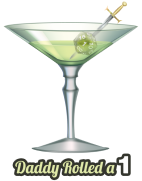
I mentioned that I run 1981 Basic D&D for my daughter and her friends, but I found that so many people on Twitter, where I was pretty active at the time in the TTRPG space, had no idea what I was talking about. Many of the folks I chatted with started with 5E and didn’t know anything about the history of the game. So, I made a little graphic to explain the editions, but I thought a video to explain it might be more useful.
Before I made that video, I did a review of a product from a friend, Kelvin Green, just because I wanted to support him and at the time I’d only seen one other review of the product. That was my first video, and I did it as kind of a test to see how it would work. I actually waited about six months after recording the video before posting it! I did a couple other reviews after but they didn’t really get much attention. Then I decided to post my video idea on “The History of D&D Editions” and that video far and away quickly became my most popular (at the time). So, I followed that up with a video on all 18 hardback books published for Advanced D&D. That, too, was popular, and I realized folks really liked seeing these old products “on camera” again. There’s a big nostalgia factor there.
So, I decided there was interest in these topics and I began publishing videos on things like “D&D’s First Campaign Setting” and “The History of TSR UK” or “Why Does D&D Have 6 Ability Scores?”. All of those videos began to attract old-timers, and some folks who were actually there at the time who would drop into the comments to offer their corrections or memories. Additionally, many newer gamers would comment, often saying things like, “Oh, so that’s why…” Along the way, I’d continue to sprinkle in a few reviews and began offering some DM Advice, usually related to my daughter’s campaign.
At this point on the channel, there’s a focus on the History of TTRPGs (who created them and why, the games that came before D&D and how they influenced the game, why certain concepts were designed the way they were, such as alignment or the Vancian “fire-and-forget” magic system). But I do still include DM Advice videos, often-time mixed with TTRPG History (my most recent video is really me offering advice on how to use Wandering Monsters to make them more fun, creative, and unique, but it also mentions where the idea originated and why it’s part of the game from game mechanics standpoint), and the occasional review as well.
Viewers who stay all the way through to the end are treated to “Bonus Content” at the end of the video where I talk about what I was drinking (beer, wine, coffee, spirits or a cocktail) and what I was listening to (vinyl) while making my notes for the video. It’s become a fun way to differentiate my channel.
You’ve also written a blog, what’s your experience with that medium like?
I started the blog back in 2011 after reading the entirety of James Maliszewski’s “Grognardia” blog and being so inspired by his look at older games and products but also his Dwimmermount campaign. His blog led me to discover dozens of other creator blogs, and I decided to throw my hat in the ring.
In the beginning, I blogged very consistently, but that was also during a period of time that I was between clients at my boutique agency so I had a lot more free time. Also shortly after I started my blog, Google Plus was discontinued, and that was a huge blow to the old-school community because many of us used to hang out there and freely share ideas, but the community fragmented and it became difficult to retain an audience.
When the pandemic lockdowns happened, I once again found myself with more free time and I began blogging more consistently again, sharing content for old-school versions of D&D, like new spells, class options, and other things. I found it to be a very great creative outlet, and it was also a way of keeping myself on a schedule to come up with new ideas and content to post. But, after I started my YouTube channel, the blog has suffered a bit, as YouTube takes up a lot more time to make one video versus a single post, but also the engagement and views I get on YouTube are hundreds of times (sometimes thousands!) than my blog posts, and every video generates comments which I love to read and answer, versus many blog posts that go without a single comment.
Where can people find your work?
Right now, the only published thing I have that’s available for sale is the PDF of the Quintessential Aristocrat for Mongoose Publishing, which I mentioned before. It’s for the 3.5 version of D&D and is available at DriveThruRPG. I don’t make any money or commissions off of it – Mongoose paid me a flat rate to write the book back when it was first published.
The next thing you’ll see from me is my Kickstarter for Alchemy, Explosions and Inventions, which kicks-off on June 3rd 2024!
What else would you like to let readers know?
I love interacting with folks, either in the comments on my YouTube page, or on Twitter, Facebook, or Instagram. Feel free to leave a comment and I will do my best to get back to you! I’ve found that, by and large, the TTRPG community is a really wonderful place and I’ve met so many great folks either online or in person, and that’s one of my favorite parts of being in this hobby!
Thanks, Martin!
If you’d like to be interviewed at Shadomain, fill out this simple form and we’ll publish your answers on an upcoming Wednesday: https://shadomain.com/interview/
If you’d like customized questions about what you do, just email info@shadomain.com
Tags: Content Creation



